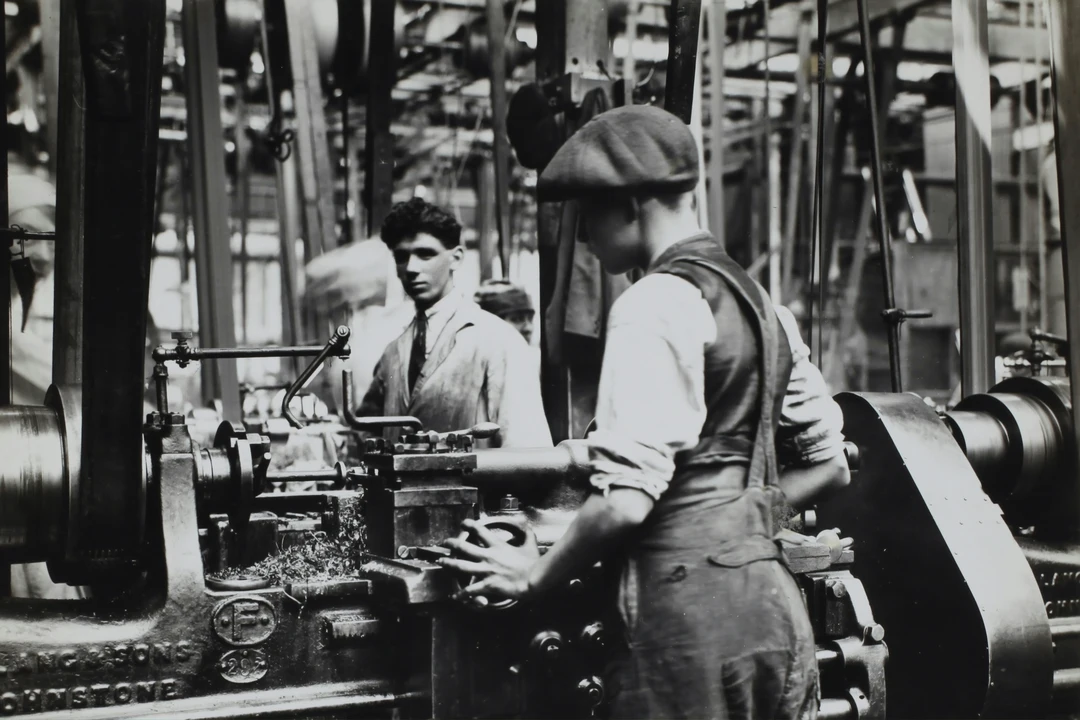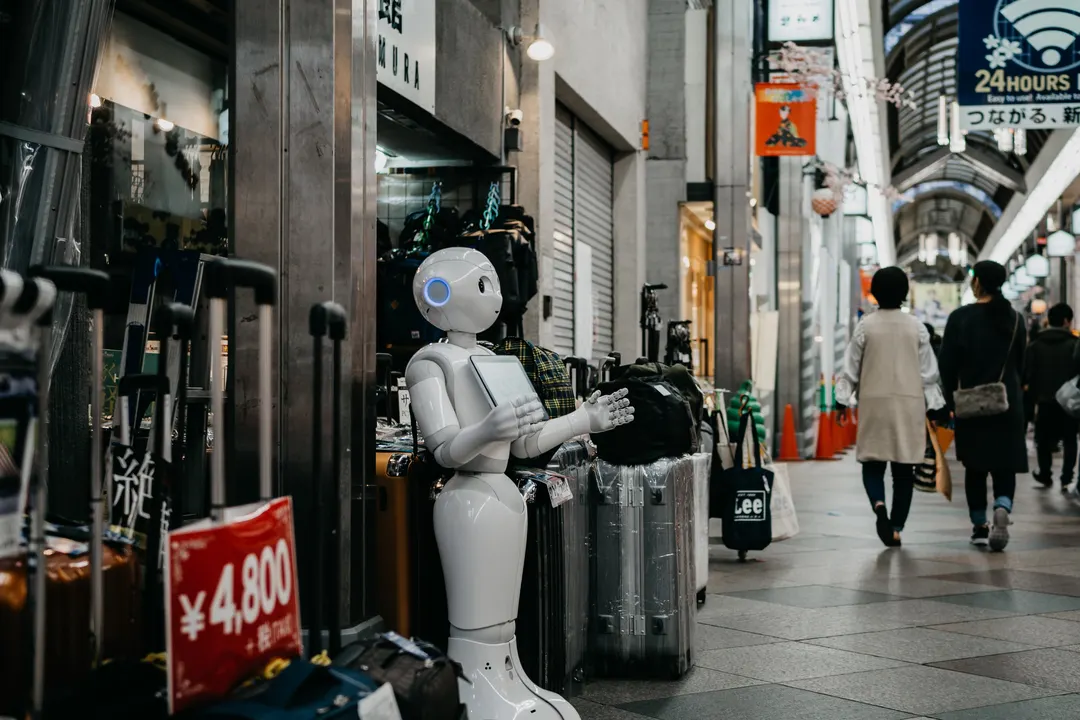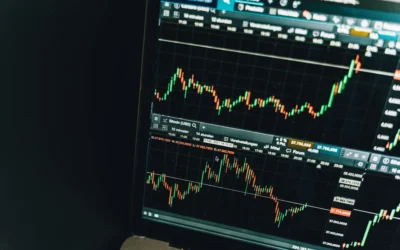Business has been a key part of social, political and economic life for centuries.
From early trade systems to contemporary e-commerce websites, business evolution remains closely linked to broader historical shifts. As the world has transformed to accommodate changing norms and industry developments, businesses have endured.
With this in mind, let’s dive into the history of business and business theory as it relates to today.
The Early Foundations of Business

The early history of business can be defined by two historical developments: the trade and barter systems, and the emergence of monetary currency.
Early trade and barter systems
The origins of business reach back to the construction of early trade networks, like the Silk Road, which famously connected the major ancient civilisations of China and the Roman Empire.
These systems often operated via bartering – the exchange of goods or services for other goods or services, without the use of money.
While early barter systems worked well for their simplicity, preservation of natural resources, and prevention of foreign exchange crises, they weren’t without their challenges. Barter systems require a convergence of needs that may not always coincide.
Bartering also lacks a standard means of measuring value, and relies too heavily upon mutual trust, which was often broken by one or both trading parties.
As a result, a trade system addressing the above concerns was needed, leading to the introduction of currency. This laid the groundwork for future economic structures.
The emergence of currency
To address the shortcomings of early barter systems, which lacked a standardised measurement of value, many early civilisations turned to currency.
The transition from a barter system to a monetary system allowed for a balanced system of exchange, incorporating international trade networks, and guaranteeing that merchants could receive a fair price for their goods.
The introduction of currency allowed commercial trade to flourish in the Middle Ages, ushering in concepts of debt and credit, bills of exchange, and early banking institutions.
The emergence of currency also enabled the rise of treasuries on the European continent. These institutions created and managed new money, and unlike barter systems, garnered the public’s trust.
The Medieval Guilds and Rise of Mercantilism

Guild systems and craftsmanship
The guilds of medieval Europe were a means through which merchants and craft workers – now relying on early forms of currency – could benefit from mutual aid. They established uniform production standards and reduced economic competition.
The two distinct types of guild systems were:
1. Merchant guilds for traders
2. Craft guilds for skilled artisans (such as leather workers and weavers)
Merchant guilds allowed traders to gain a sense of community, and even build political influence from the collective spirit of its members. This created a new middle class of powerful merchants in the decades preceding the rise of mercantilism.
With the rise of this wealthier middle class, entry requirements and regulations to join guilds became stricter, and an increasingly powerful bourgeoisie successfully maintained their position above the workers who lacked the skills to start their own businesses or gain guild membership.
Mercantilism and global trade
Not long after, a new system of economic trade emerged: mercantilism.
As an economic philosophy, mercantilism refers to the idea that trade generates wealth when aided by restrictive trade practices – or protectionism. Simply put, mercantilism was based on the idea that a nation’s power could be best served by increasing exports and reducing imports.
This resulted in the rise of individual global trade powers, whose reliance on exports and cheap labour significantly undermined the economies of smaller regions or colonies.
The Industrial Revolution and Modern Business

Impact of the Industrial Revolution
With the establishment of these economic superpowers such as Britain, the 18th century saw a massive growth in industry.
This ushered in a period of global transition towards more efficient manufacturing processes. Known as the Industrial Revolution, this transition saw the:
- Replacement of hand production with machine production
- Increasing use of steam power
- Rise of urban cities and factories
- Development of mechanised tools
The Industrial Revolution also significantly transformed business models, ushering in a manufacturing economy defined by:
- Increased production and efficiency
- Lower prices
- Improved wages
- Higher standards of living in industrialised countries
- A migration of business from rural regions to urbanised metropolitan centres
Significant technological innovations also coloured the Industrial Revolution, such as steamships, the electrical telegraph, mechanised cotton spinning for textile production, and the use of iron to circumvent the limitations of water power.
Birth of modern management theories
During the industrial era, there also emerged several early management theories.
Scientific Management Theory
Developed by Frederick Winslow Taylor in 1909, this theory believes that success is dependent upon the effective completion of each and every task, no matter how small.
This means that each employee should be assigned a particular job that best fits their skills, while managers are responsible for the provision of relevant training and development.
Administrative Management Theory
Developed by Henri Fayol in the early 1900s, this theory focuses on the organisational structure of an entire company via clear divisions of labour, an alignment with organisational goals, and a healthy manager-employee relationship.
Bureaucratic Management Theory
Developed by Max Weber at the end of the 19th-century, this theory highlights the role of bureaucracy in spelling out company objectives, efficiently dividing labour, and the importance of emotion in business.
As highlighted by Weber’s theory, the emergence of industry and concurrent management theories emphasised the role of human-beings in business.
However, it wasn’t until the 20th century that such an approach would be adopted by business leaders on a global scale.
20th Century: From World Wars to Globalisation

Business amidst World Wars
When the First World War broke out in 1914, and the Second in 1939, the ubiquitous role of business in international affairs could no longer be understated.
During this time of conflict, global businesses were pivotal in the production of military goods, weaponry and advanced machinery (such as aircrafts and tanks). Factories provided employment and cheap sources of income for families with a relative at war, and offered manufacturing jobs to returned soldiers during the period of reconstruction.
The post-war era saw the rise of multinational corporations that had gained economic and political clout. Through a monopoly on intellectual and technological property, these corporations were fundamental to victories during the military conflicts of the 20th century, and were bolstered by shifting economies in the post-war era.
In the United States, for example, government leaders believed that future international stability was dependent upon economic growth worldwide, including in un-industrialised countries.
Rise of management theories
Like the management theories that emerged from the Industrial Revolution, the post-war period also saw an influx of new theories still used by modern businesses today. These included:
Human Relations Management Theory
Elton Mayo developed this theory at Chicago’s Western Electric Hawthorne Plant in the 1920s and 1930s, arguing that the success of business was directly linked to human interactions and employee performance.
His ideas, now widely known as the Hawthorne Effect, highlighted the importance of individual and group dynamics in increased productivity.
General Systems Theory
General Systems Theory was developed by biologist Ludwig von Bertalanffy in the 1940s, stressing that external factors can be toxic to a productive work environment.
As with the human body, the overall productivity of a business is a sum of all its parts, including internal and external efficiency. When one component of a corporation is not working properly, the rest of the organisation will be negatively impacted.
The post-war period saw businesses shift from strictly money-making models to systems of operation that relied on human relations and group dynamics.
Contemporary Business Landscapes

Information age and technological revolution
The era following the post-war period is often known as the information age.
The information age saw a rapid shift from traditional industries to an economy centred around information technology. This technological revolution, taking place throughout the latter half of the 20th century, fundamentally altered the functions of modern business.
In particular, information technology has enabled businesses to attain a greater reach via email, computerisation, social media and global communications. The rise of automation has also reduced production time, and increased understanding of consumer profiles and public needs.
Technology has also shaped new and innovative business models, driving businesses to become increasingly complex and compliant with new legal and ethical requirements.
Globalisation and business dynamics
The modern era of globalisation has had a profound impact on international business practices.
Globalisation has decreased the cost of manufacturing, allowing companies to offer goods at a lower price to consumers. This has increased standards of living for many, as well as increasing access to a wider variety of goods.
As an increasing number of nations are involved in trade development, economic globalisation has created a worldwide-interconnected economy that’s massive in both scale and degree of innovation. With that said, there are some challenges presented by modern business dynamics.
To start, globalisation is generally an expensive endeavour, requiring businesses to invest a great deal of capital into effective globalisation strategies.
It’s also led to increased economic competition and a significant surge in the exploitation of natural resources, contributing to the increasing threat of climate change in the 21st century.
Contemporary Business Theories
Strategic management theories
As with previous developments in business and industry, globalisation has led to the emergence of several unique business theories. These include numerous strategic management theories, which guide decision-making processes and increase the efficiency of multinational corporations. These include:
- Competition‐based theory. The main business objective is to maximise long-term profit, and develop a sustainable competitive advantage over other businesses.
- Resource‐based theory. A company’s competitive advantage is found in its internal firm resources, competencies and capabilities.
- Survival‐based theory. The theory that an organisation must continuously adapt to its competitive environment if it is to survive.
- Human resource-based theory. The idea that human factors of an organisation are the most critical elements in the strategic process, building upon several post-war management theories that centred human relations.
- Agency theory. Emphasises the importance of the relationships between company owners and company managers in the global context referred to as shareholders and agents.
Globalisation has also seen the adoption of concepts including SWOT analysis – a strategic management technique that’s used to help an organisation identify its relevant strengths, weaknesses, opportunities and threats.
Sustainable business practices
Globalisation in the modern era has also seen a shift towards sustainable and socially responsible business practices. Cultivated as a response to increased labour organising and ethics, as well as the threat of climate change, this development has seen the creation of corporate social responsibility (CSR).
CSR is a business model that helps a company remain socially accountable to itself, its employees, its stakeholders and agents, and the public (consumers). CSR encourages international business to self-regulate in alignment with the public good, while contributing to societal goals of philanthropic, activist or charitable endeavours.
Looking Ahead: Future Trends in Business

Technology and AI in business
The 21st century has witnessed an unprecedented increase in emerging technologies, perhaps best illustrated by the rise of artificial intelligence (AI) in business.
AI facilitates data-driven decision-making, enables businesses to make more accurate and time-effective decisions, and provides customers with personalised experiences that increase consumer satisfaction.
Furthermore, AI can analyse data at a much faster pace than the human brain, allowing businesses to streamline previously complex processes of innovation.
Beyond artificial intelligence, there are also several trends in automation that will likely have an impact across industries. Take, for example, process automation, which could lead to more cost-effective business strategies, increase productivity and customer satisfaction, and produce scalable processes.
Adapting to changing consumer behaviour
Businesses are also in the process of adapting to changing consumer preferences and behaviours.
With the emergence of digital technologies and increased means of connecting with consumers at each stage of the customer journey, consumers are able to receive more personalised recommendations tailored to their interests and digital profiles.
Similarly, the rise of online technologies has allowed businesses to become increasingly digital in their global reach, with a rise in mobile applications, updated web pages, and virtual options for consumers to access products.
These dynamic market shifts require modern businesses to prove increasingly flexible and innovative in their response to changing societal and economic norms.
The history of business has been defined by a series of transformations for centuries.
From the emergence of monetary currency to the business theories engendered by the Industrial Revolution, to post-war innovations and the contemporary rise of automated technologies, business and business theory has consistently shaped and reacted to changing societal and economic norms.

By Adam Kluge
Adam (he/him) recently completed his MSc in Criminology and Criminal Justice at the University of Oxford. His research exists at the intersection of law, politics, and history – and he welcomes opportunities to further explore these areas through personal and pedagogical practices. He completed his undergraduate degrees at Columbia University and will begin a PhD in Criminology at Oxford this autumn.





